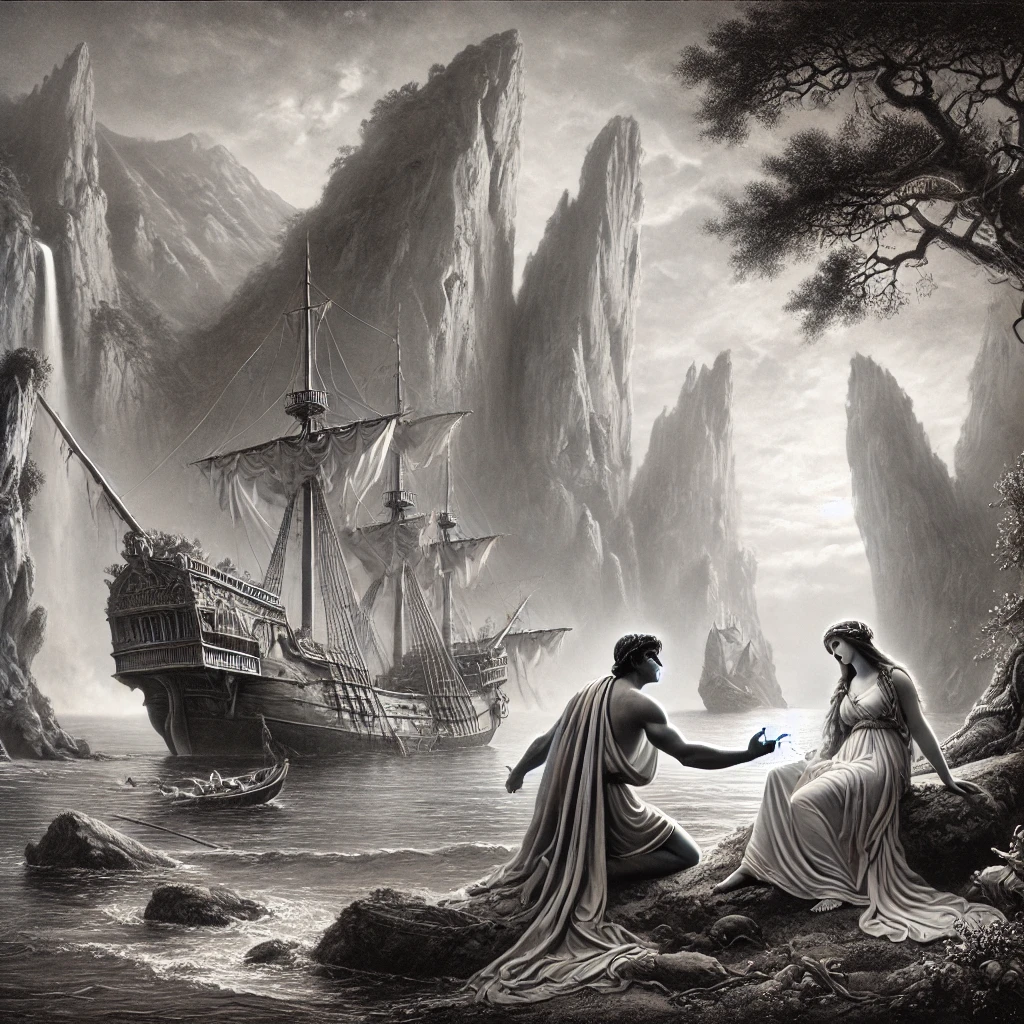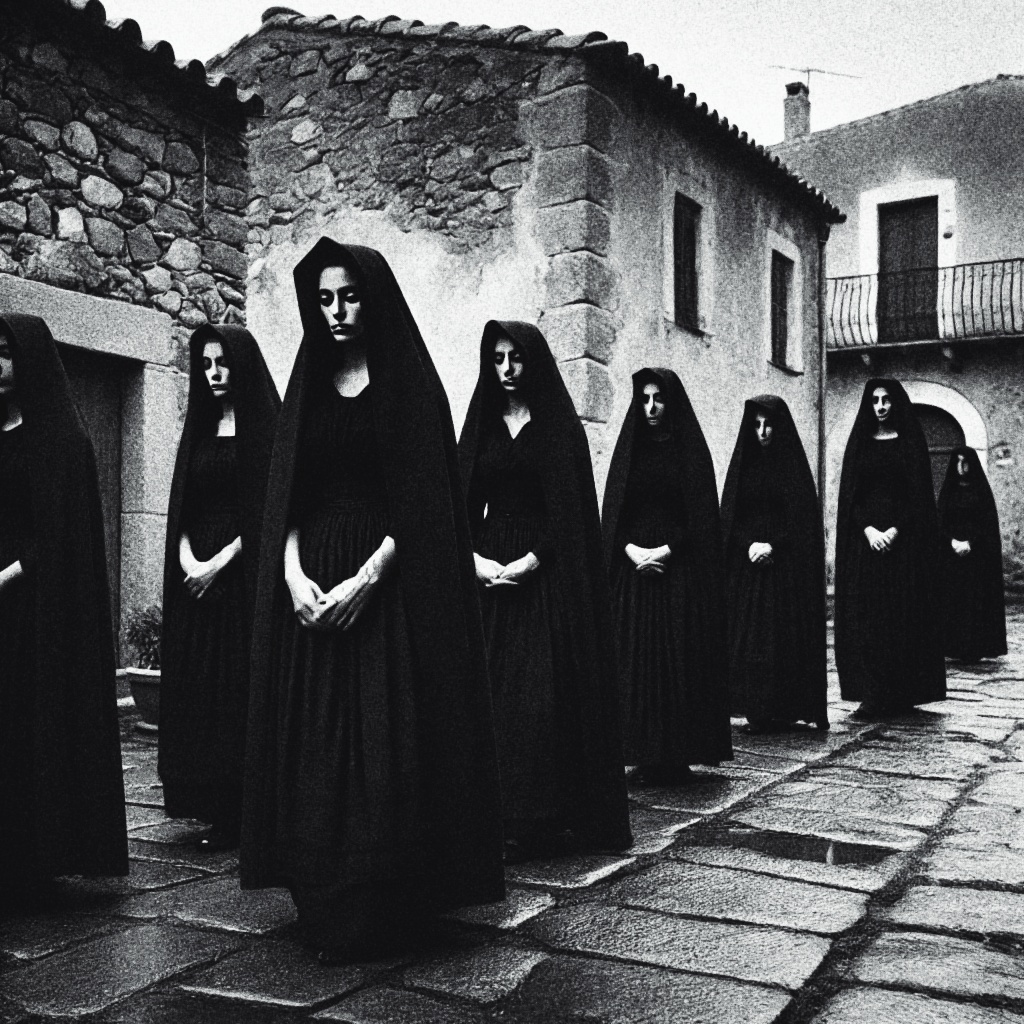If we commonly use the term “an Odyssey” to describe a massive and never-ending endeavor, it’s no coincidence: after fighting for ten years in the Iliad, Ulysses finds himself thrown into the next book, the Odyssey, where he takes another ten years to return home.
And he certainly doesn’t get there on a pleasure cruise: worn out and exhausted from war, he encounters characters who want to make his life even harder than it already is. From the giant Polyphemus, who traps him in his cave and eats two of his companions, to Poseidon, who holds a grudge against him because Ulysses blinded his son’s only eye to escape. The sorceress Circe, who turns his men into pigs, and the nymph Calypso, who falls in love with him and forces him to stay on her island (to the point that he almost convinces himself, unaware of the emotional manipulation the nymph is using on him).
After countless adventures, poor Ulysses finally reaches his last stop: Scheria, the island of the Phaeacians, where he at last finds “normal” people willing to help him.
These Phaeacians, despite their semi-divine traits, are among the characters in the poem who come closest to reality. Though the Odyssey is filled with mythology and magical powers, it also presents connections to real life. Ulysses, in fact, was traveling in the Mediterranean, and apart from Ithaca, the island he is trying to return to, all the other islands mentioned are mythical. However, it is likely that some of them actually existed but were simply given different names by Homer (or whoever wrote the poem), blending myth and reality.
It is also interesting to note how many similarities exist between these Phaeacians and the Nuragic Sardinians, as pointed out by scholar Massimo Pittau:
Just like the Phaeacians, the Nuragic people were probably newcomers to the island (having come from Lydia). Like the Phaeacians, the Nuragic people were skilled sailors and practiced athletic and military games (as seen in Nuragic bronze figurines depicting wrestlers, boxers, and horsemen). Like the Phaeacians, the Nuragic people danced in a circle while someone in the center played an instrument similar to multiple flutes, like the launeddas (today, people play the accordion).
Arete, the wife of the Phaeacian king Alcinous, enjoyed a prestige that was not common for women at the time the Odyssey was written. In Sardinian society, however, women had a much more similar status to that of Arete (which is why Sardinia has historical examples of women in ruling positions, such as Eleonora d’Arborea).
Ulysses’ encounter with the Phaeacians went more or less like this:
After years and years of travel, with Poseidon still chasing him for revenge, Ulysses washes up on the shores of Scheria, where he collapses, naked and exhausted. As already mentioned, the island is inhabited by the Phaeacians, whose king and queen are Alcinous and Arete, and they have a daughter: Nausicaa. Following a dream’s advice, Nausicaa goes to the river to wash clothes, where she encounters Ulysses, who is clearly in rough shape.
She offers him clothes and kindness and encourages him to go to her parents’ palace, where he is welcomed with a hospitality he hasn’t experienced in a long time. During the feast, Demodocus, a blind bard, sings tales of the Trojan War, and Ulysses is so moved that he openly weeps (because, after all, he witnessed the war firsthand).
His tears make the king curious, and he asks Ulysses to reveal his true identity. After hearing Ulysses’ story, the Phaeacians take a liking to him and decide to help him get home. They provide him with a fast ship and even personally escort him back to his beloved Ithaca.
As I mentioned earlier, Poseidon is still furious with Ulysses for blinding his son, Polyphemus. And, of course, as the saying goes: the friend of your enemy is also your enemy. So, he takes his anger out on the Phaeacians and turns one of their ships to stone as it returns to Scheria.
If it weren’t for the fact that Tavolara’s unusual shape really does resemble a ship sailing toward Sardinia, that its northeastern tip is called Punta Timone (Helm Point), and that a limestone arch on its eastern coast has been named Arco di Ulisse (Ulysses’ Arch), perhaps no one would have ever theorized that Homer’s petrified ship actually refers to Tavolara.
Whether this is true or false, we will never know (unless some ancient document miraculously appears to confirm Homer’s writing). But as Pittau’s research concludes, this hypothesis cannot be ruled out, given that Ulysses traveled the Mediterranean, and Sardinia, due to its strategic position and crucial role, both culturally and geographically, was an inevitable stop.
I don’t know about you, but I like to think that Tavolara is a ship turned to stone by an enraged god of the sea.
- M. Pittau, La lingua dei Sardi Nuragici e degli Etruschi & Lessico Etrusco-Latino comparato col Nuragico
- E. De Felice, Le coste della Sardegna. Saggio toponomastico storico-descrittivo
- A. Papurello Ciabattini, Il profilo geografico di Tavolara.
- D. Panedda, I nomi geografici dell’agro di Olbia.
- O. Höckmann, La navigazione nel mondo antico



